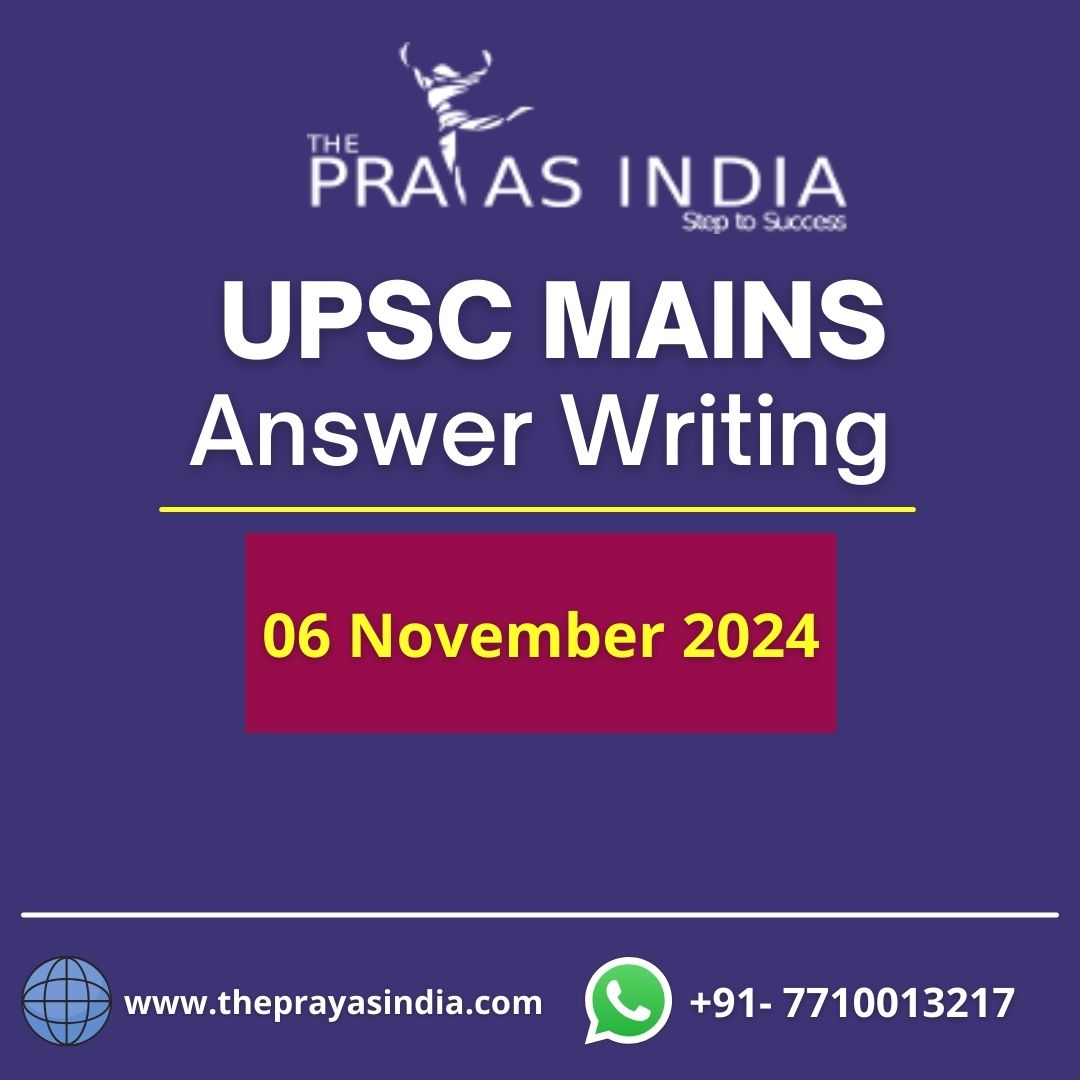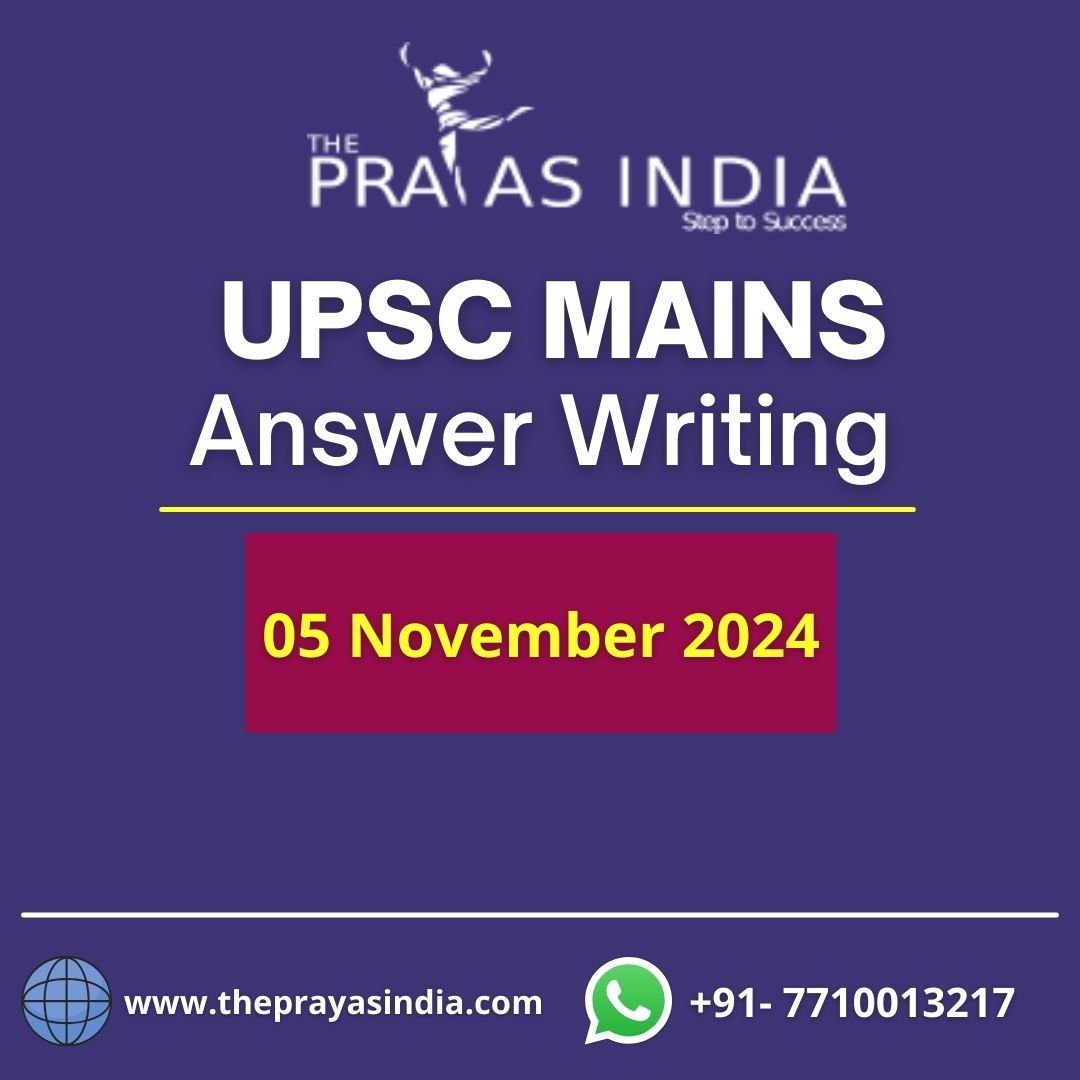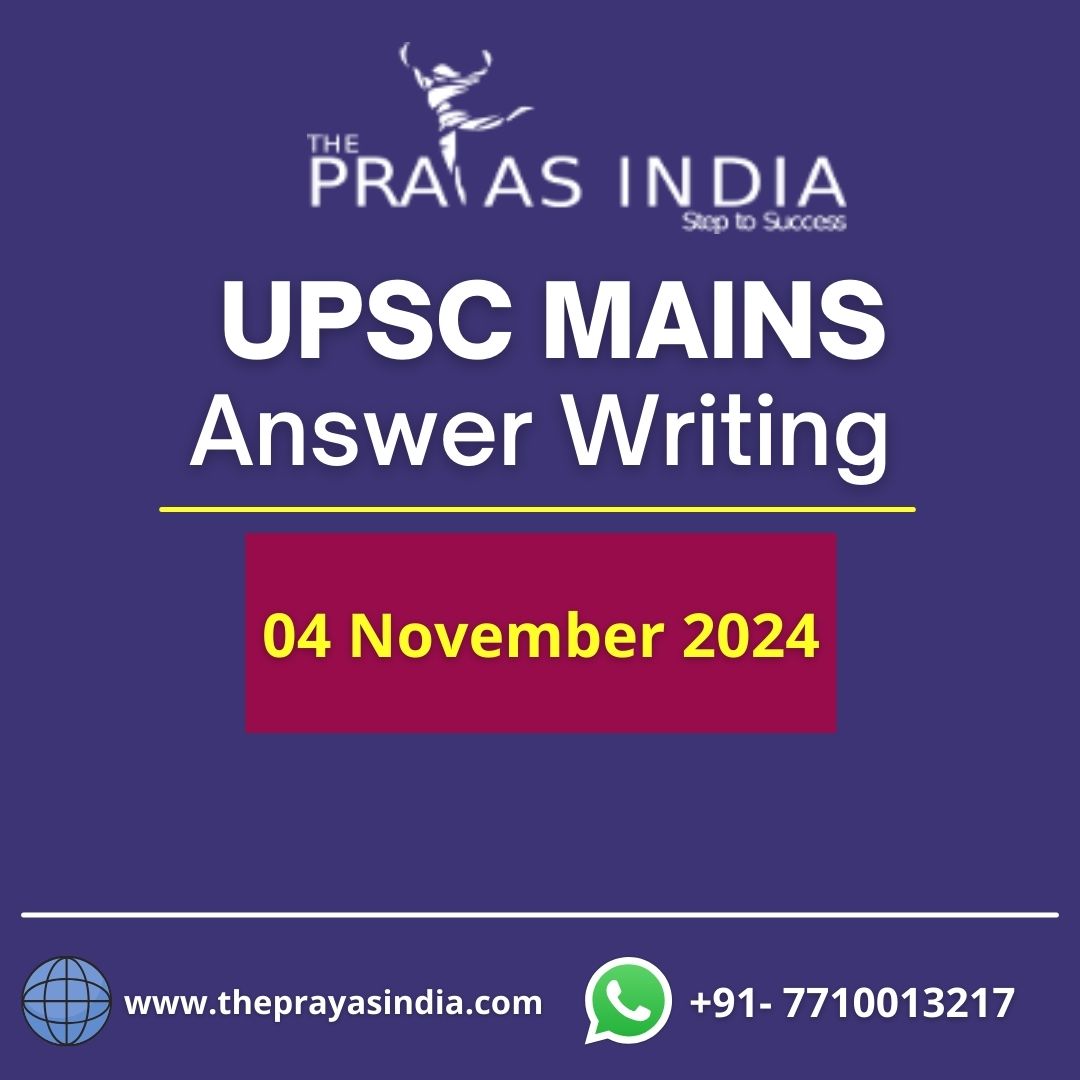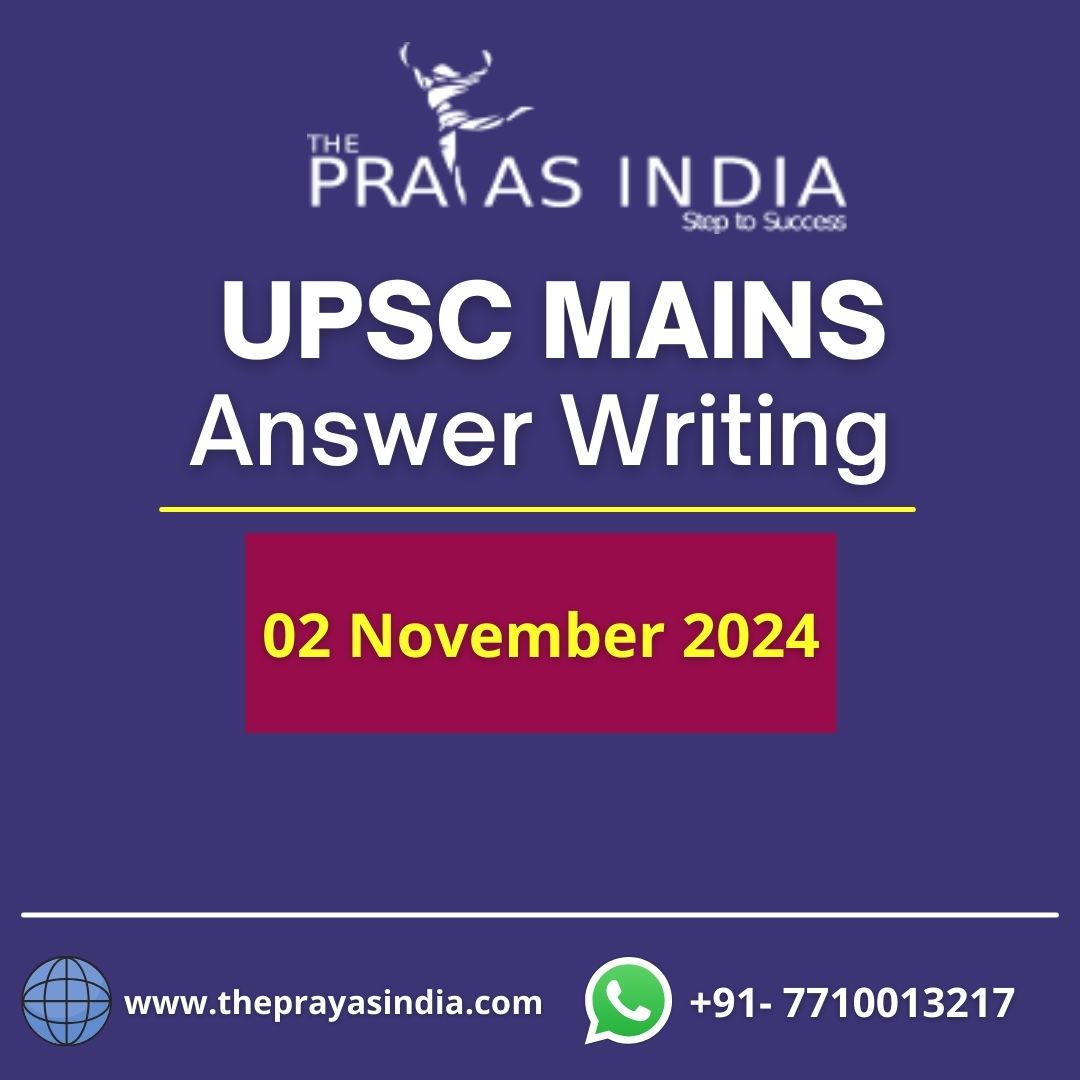MAINS DAILY QUESTIONS & MODEL ANSWERS
Q1. It is said that Good Governance is the Technology whereas Citizen’s Charter is the Tool for citizen centricity. Highlighting the statement, discuss how Citizen Charter could be a game-changer in governance in India.
GS II – Governance related issues
Introduction:
- A Citizens’ Charter represents the commitment of the Organisation towards standard, quality and time frame of service delivery, grievance redress mechanism, transparency and accountability. The concept of Citizens Charter enshrines the trust between the service provider and its users.
- Department of Administrative Reforms and Public Grievances in Government of India (DARPG) initiated the task of coordinating, formulating and operationalising Citizen’s Charters.
- The basic objective of the Citizens Charter is to empower the citizen in relation to public service delivery.
Importance of Citizen’s charter in the Governance of developing nation like India:
- To make administration accountable and citizen friendly.
- To ensure transparency.
- To take measures to improve customer service.
- To adopt a stakeholder approach.
- To save time of both Administration and the citizen
Problems faced in implementation of Citizen’s charter:
- One size fits all: Tendency to have a uniform CC for all offices under the parent organization. CC have still not been adopted by all Ministries/Departments. This overlooks local issues.
- Silo operations: Devoid of participative mechanisms in a majority of cases, not formulated through a consultative process with cutting edge staff who will finally implement it.
- Non-Dynamic: Charters are rarely updated making it a one-time exercise, frozen in time.
- Poor design and content: lack of meaningful and succinct CC, absence of critical information that end-users need to hold agencies accountable.
- Lack of public awareness: only a small percentage of end-users are aware of the commitments made in the CC since effective efforts of communicating and educating the public about the standards of delivery promise have not been undertaken.
- Stakeholders not consulted: End-users, Civil society organizations and NGOs are not consulted when CCs are drafted. Since a CC’s primary purpose is to make public service delivery more citizen-centric, consultation with stakeholders is a must.
- Measurable standards of delivery are rarely defined: making it difficult to assess whether the desired level of service has been achieved or not.
- Poor adherence: Little interest shown by the organizations in adhering to their CC. since there is no citizen friendly mechanism to compensate the citizen if the organization defaults.
Way forward:
- Wide consultation process: CC be formulated after extensive consultations within the organization followed by a meaningful dialogue with civil society.
- Participatory process: Include Civil Society in the process: to assist in improvement in the contents of the Charter, its adherence as well as educating the citizens about the importance of this vital mechanism.
- Firm commitments to be made: CC must be precise and make firm commitments of service delivery standards to the citizens/consumers in quantifiable terms wherever possible.
- Redressal mechanism in case of default: clearly lay down the relief which the organization is bound to provide if it has defaulted on the promised standards of delivery.
- One size does not fit all: formulation of CC should be a decentralized activity with the head office providing only broad guidelines.
- Periodic updation of CC: preferably through an external agency.
- Fix responsibility: Hold officers accountable for results: fix specific responsibility in cases where there is a default in adhering to the CC.
Conclusion:
- Citizen’s Charter is playing a prominent part in ensuring “minimum government & maximum governance”, changing the nature of charters from non-justiciable to justiciable & adopting penalty measures that will make it more efficient & citizen friendly. The Sevottam model proposed by 2nd Administrative Reforms Commission for public Service Delivery can be regarded as a standard model for providing services in citizen centric governance.
Q2. The role of the governor is of a sagacious counsellor, mediator and arbitrator rather than that of an active politician. Comment.
GS II – Constitution related issues
Introduction:
- Article 154 of the Constitution envisages Governor as the executive chief of the state. All executive actions are taken in his name. B R Ambedkar called the office of the Governor as the “office of dignity”. He is not an agent of the Centre, but the governor’s post in an independent Constitutional office. His office is the linchpin of Indian Cooperative Federalism.
Role of the Governor:
- The Constitution thus assigns to the Governor the role of a Constitutional sentinel and that of a vital link between the Union and the State.
- The Governor, on occasions, could also play a useful role as a channel of communication between the Union and the State in regard to matters of mutual interest and responsibility
- India invented the role of state governor after Independence to act as a conduit between the ceremonial head of state (the president) and the chief minister of each state, as the president’s eyes and ears in the country’s diverse and far-flung states.
- Their duty is to be neutral guardians of the complex relationship between the federal government and state governments belonging to different political parties.
- Being the holder of an independent Constitutional office, the Governor is not a subordinate or a subservient agent of the Union Government.
- The Governor is expected to advance the cause of federalism and democracy in the contemporary constitutional landscape, which form a part of the basic structure of the constitution.
- As the distinguished constitutional expert, Nani A. Palkhivala explained it “the Constitution intended that the Governor should be the instrument to maintain the fundamental equilibrium of the people of the State and to ensure that the mandates of the Constitution are respected in the State”.
- In his speech on the constitutional role of Governors, B.R. Ambedkar described how a Governor should use his discretion not as “representative of a party” but as “the representative of the people as a whole”
Tyranny of the unelected in recent times:
- Gubernatorial powers:Misusing the powers of Governor.g.: In Maharashtra, Governor Bhagat Singh Koshyari has stalled the election of Speaker since the post fell vacant in February 2021. He had refused to accept the recommendation of the Council of Ministers on the nomination of 12 members to the Legislative Council, until the matter reached the High Court.
- Locking horns with Government:g.: West Bengal Governor Jagdeep Dhankhar has made allegations of impropriety in welfare schemes, questioned Government claims about investments in the State, and taken up the cudgels for the Opposition BJP. He has been summoning the Chief Secretary and the Director General of Police on a regular basis, and when they do not turn up, taking to Twitter and often tagging the Chief Minister.
- Governor’s appointment: Article 155says that governor should be appointed (not elected) from amongst persons of high status with eminence in public. The elected government at the state is not even consulted while making appointment of the Governors. Further successive governments have reduced this important constitutional office to a sinecure and resting place for loyal and retired / about to retired / about to retire politicians apart from docile bureaucrats.
- Appointment and dismissal of the Chief Minister: Governor appoints Chief Minister, other ministers, Advocate General, Chairmen and members of the State Public Service Commission in the state. After elections in the state, there is a convention to invite the largest party to form government in the state. This convention has been flouted many times at the whim of the governor. E.g.: The recent episode Maharashtra where Governor inducted a new government at 5:00 am without ascertaining the requisite numbers for the government.
- Reservation of Bills for Consideration of President: As per Article 200of the Constitution, the governor can reserve certain types of bills passed by the State Legislature for the President’s consideration. Centre, through the governor in case of different parties ruling, used this provision to serve partisan interests. g. In Tamil Nadu, Governor R.N. Ravi has not acted upon the T.N. Admission to Undergraduate Medical Degree Courses Bill, adopted by the Assembly in September 2021. the indefinite delay in taking a decision amounts to undermining the legislature, and is unjustifiable.
- Misuse of Article 356: Article 356is the most controversial article of the Constitution. It provides for State emergency or President’s rule in State if the President, on receipt of report from the Governor of a State. But since the SR Bommai case, this has been sparsely used.
- Removal of the Governor:Article 156 says that the governor will hold office during the pleasure of the President for five years. The governor has no security of tenure and no fixed term of office. This prevents to uphold neutrality of the governor, fearing retribution. E.g.: The mass changing of the governors of state whenever a new government comes to power at Centre.
Need for codification of powers of the Governor:
- Rajamannar Committee: Consultation of the CM must become mandatory before the appointment of the Governor.
- Punchhi Commission: The phrase “during the pleasure of the President” should be deleted from the Constitution.
- Governor should be removed only by a resolution of the state legislature.
- Qualification for the post must be laid down in Constitution while giving security of tenure. This will enable the Governor to take impartial and neutral decisions.
- Sarkaria Commission Report (1988): On appointment of Governor: –
- Governor should be an eminent person and not belong to the state where he is to be posted.
- State chief minister should have a say in the appointment of governor
- Governor should be a detached figure without intense political links or should not have taken part in politics in recent past.
- Governor should not be a member of the ruling party.
- Other recommendations: Governor must act at all times in aid and advise of CM, unless as given specifically in the Constitution.
- He or she must not overpower or assume the role of state government.
Conclusion:
- In a federal structure, the states cannot function as vassals of the Centre. Governors are a relic of the British past and many of them have downgraded themselves to mere agents of the Centre with utter disregard to constitutional provisions, conventions, precedents and even court verdicts. It is perhaps time to take a re-look at the post of governor itself or at least codify their powers to ensure that tyranny of the unelected does not triumph over popular governments.




